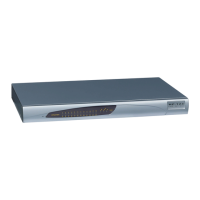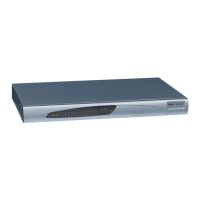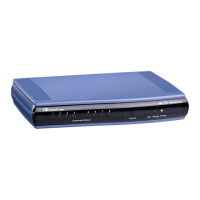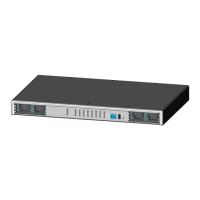User's Manual 130 Document #: LTRT-27045
Mediant 1000B Gateway & E-SBC
Parameter Description
''Configuring Ethernet Port Groups'' on page 130.
Group Status
group-status
[PhysicalPortsTable_GroupStatus]
(Read-only) Displays the status of the port:
"Active": Active port. When the Ethernet Group includes
two ports and their transmit/receive mode is configured to
2RX 1TX or 2RX 2TX, both ports show "Active".
"Redundant": Standby (redundant) port.
12.3 Configuring Ethernet Port Groups
The Ethernet Groups table lets you configure Ethernet Groups. An Ethernet Group
represents a physical Ethernet port(s) on the device. You can assign an Ethernet Group
with one, two, or no ports (members). When two ports are assigned to an Ethernet Group,
1+1 Ethernet port redundancy can be implemented in your network. In such a
configuration, one port can be active while the other standby or both ports can be active,
depending on the ports' transmit (Tx) and receive (Rx) settings. This provides port
redundancy within the Ethernet Group, whereby if a port is disconnected the device
switches over to the other port in the Ethernet Group. If you configure an Ethernet Group
with only one port, the Ethernet Group operates as a single port (no redundancy).
The Ethernet Groups table also lets you configure the transmit (Tx) and receive (Rx)
settings of the Ethernet ports per Ethernet Group. The Tx/Rx setting is applicable only to
Ethernet Groups that contain two ports. This setting determines whether either both ports
or only one of the ports can receive and/or transmit traffic.
The maximum number of Ethernet Groups that you can configure is the same as the
number of Ethernet ports provided by the device. Thus, the device supports up to six
Ethernet Groups where each contains one port, or up to three Ethernet Groups where each
contain two ports, where one port-pair is on the CRMX module and two port-pairs are on
the optional, SWX LAN Expansion module (see note below). By default, each Ethernet
Group is assigned two ports; the other Ethernet Groups are empty.
You can assign Ethernet ports to IP network interfaces. This is done by first configuring an
Ethernet Device with the required Ethernet Group containing the port or ports (see
''Configuring Underlying Ethernet Devices'' on page 132). Then by assigning the Ethernet
Device to the IP network interface in the IP Interfaces table (see ''Configuring IP Network
Interfaces'' on page 135). This enables physical separation of network interfaces, providing
a higher level of segregation of sub-networks. Equipment connected to different physical
ports is not accessible to one another; the only connection between them can be
established by cross connecting them with media streams (VoIP calls).
Note: The SWX LAN Expansion module is a customer-
information, contact your AudioCodes sales representative.
The port names (strings) displayed in the Ethernet Groups table represent the physical
ports on the device. For the mapping of these strings to the physical ports, see Configuring
Physical Ethernet Ports on page 128.
The following procedure describes how to configure Ethernet Groups through the Web
interface. You can also configure it through ini file (EtherGroupTable) or CLI (configure
network > ether-group).

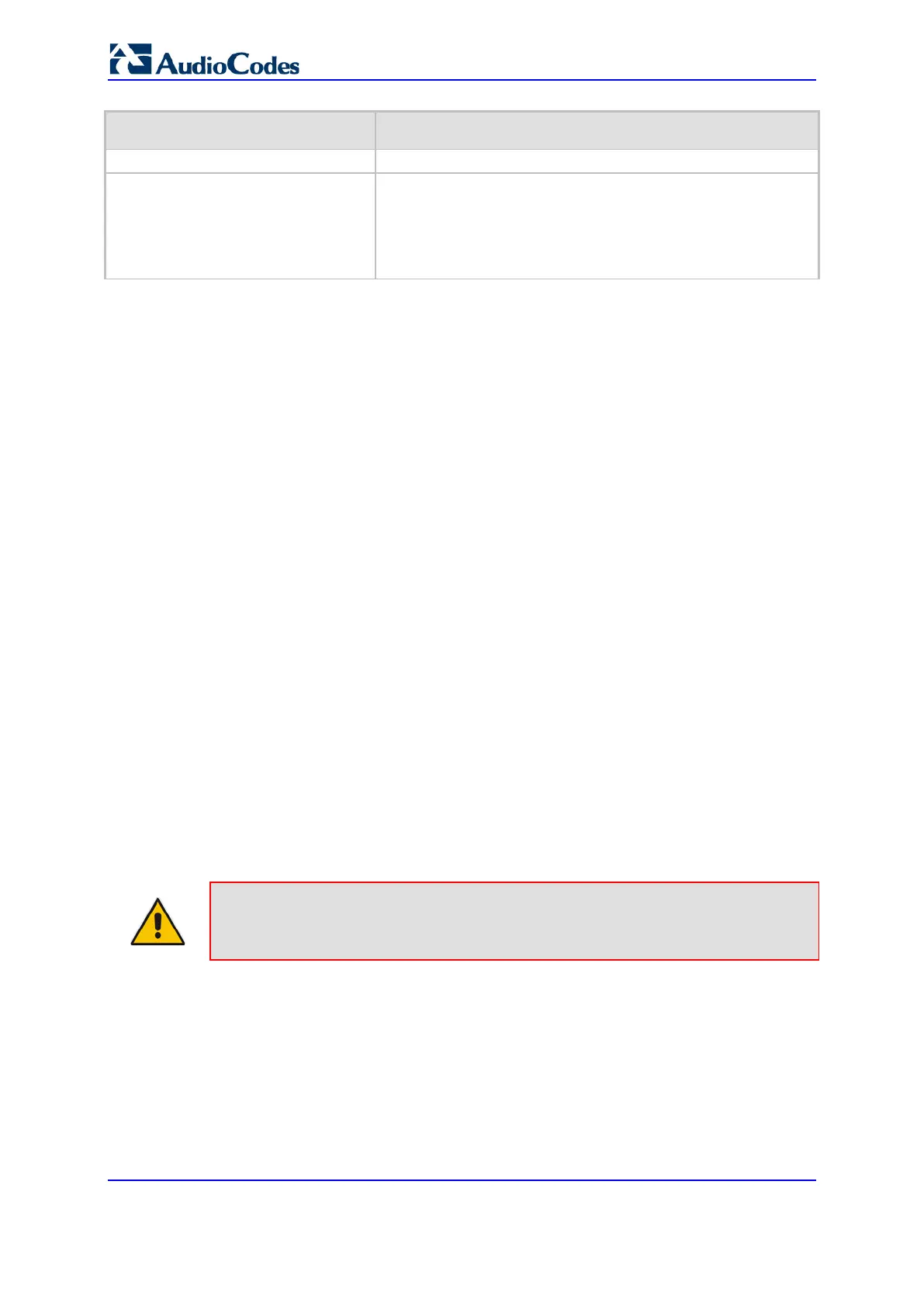